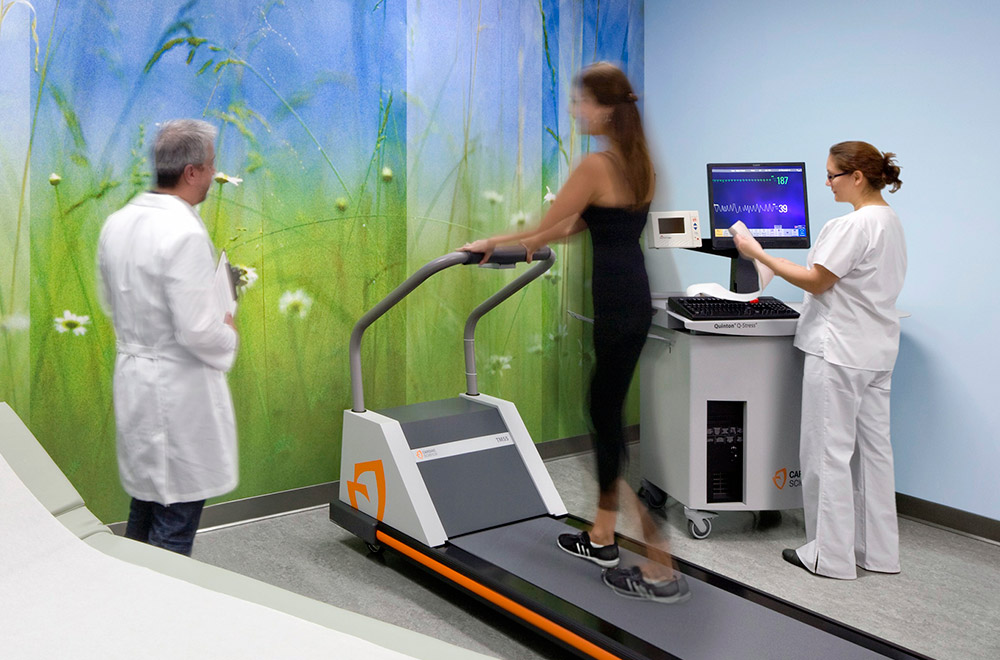Designed by HMC Architects, Kaiser began construction on a new hospital, central plant and support building for their facility in Fontana, Calif. Located on the southern end of the existing Kaiser Permanente Fontana Medical Center site, the hospital facility will replace the existing hospital tower at the campus, which will later be converted for outpatient use. The project, under construction by McCarthy Building Companies, Inc.—one of Southern California’s preeminent healthcare builders—officially began construction during a groundbreaking ceremony hosted by Kaiser Permanente on May 8.
“We are thrilled to begin construction on our new state-of-the-art hospital facility,” said Greg Christian, executive director of Kaiser Permanente’s Fontana and Ontario Medical Centers. “We are building the new facility to provide our members with state-of-the-art medical services and to meet the new, more rigorous seismic safety standards established by the state of California. Once completed, our new hospital will be one of the largest and most innovative healthcare facilities in the Inland Empire.”
“Although the project is a part of Kaiser Permanente’s innovative hospital template system and has a similar design to other Kaiser Permanente facilities that have already been built, the Fontana project has some unique design challenges,” explained HMC Principal in Charge Chin Lee. “We have developed solutions for integrating the new buildings with the existing structures within a constrained, sloping site and maximizing pedestrian safety and way-finding.”
Serving as the general contractor for the project, McCarthy’s contract entails construction of a new member and doctor parking lot as well as the relocation of utilities prior to constructing a 314-bed, 481,000-SF hospital, a 50,000-SF hospital support building and a 23,000-SF central utility plant. The new seven-level hospital features a plaster and curtain wall exterior with a structural braced-frame core. McCarthy has been constructing the parking lot and preparing the site for construction of the replacement hospital since October 2008.
The new hospital is being built just 25 feet away from the existing hospital and 70 feet away from other operational medical facilities. “Building a major hospital facility on an extremely tight site surrounded by an operational medical center will take a great deal of planning and coordination,” said McCarthy Project Director Stephen Green. “To minimize disruption to the existing facilities, McCarthy will collaborate closely with hospital administration and project subcontractors and suppliers. We will also utilize ‘just-in-time delivery,’ stage materials off-site and shuttle construction workers in from a remote parking area.”
Scheduled for completion in December 2012, the new hospital will house a variety of specialty services including a cardiac surgery department, a 51-bed emergency department, pediatric and neonatal ICU, inpatient dialysis unit, pediatrics, ICU, labor and delivery, cardiac cath lab, and surgery. The hospital support building will be attached to the hospital and includes medical offices, radiology, a pharmacy, and a specialty clinic.
Because Kaiser Permanente is a leader in sustainable building design and operation, HMC’s design of these structures incorporates numerous sustainable and energy efficiency solutions. The project’s environmentally conscious features include energy efficient lighting, electrical, air conditioning and plumbing systems; use of reclaimed water for landscaping and cooling towers; light colored sustainable roofing; dual pane exterior window glazing and natural day lighting. Likewise, McCarthy will incorporate sustainable building methods throughout the project such as recycling building materials, minimizing unrecyclable construction waste, and maintaining proper indoor air quality.
“In order to deliver this complex healthcare project on time and on-budget, McCarthy, HMC and the project’s key subcontractors are utilizing the design-assist delivery method to complete the project design documents,” said Green. As a part of the design-assist effort, the project team is utilizing building information modeling (BIM) coordination technology to manage the project’s complex structural, architectural and mechanical, electrical, and plumbing systems.
“Design-assist delivery and BIM coordination allow the construction and design team to ensure the design is complete and buildable at the project outset, which in turn streamlines the project schedule by mitigating design revisions and increasing field efficiency,” said Green.
Additional project consultants include: structural engineer Saiful Bouquet and mechanical engineer Ted Jacob Engineering Group. The design-assist subcontracting team is Herrick Corp, Sharp Interiors, Berger Bros, Tower Glass, Swisslog, Cosco, Southland Industries, and SASCO.
